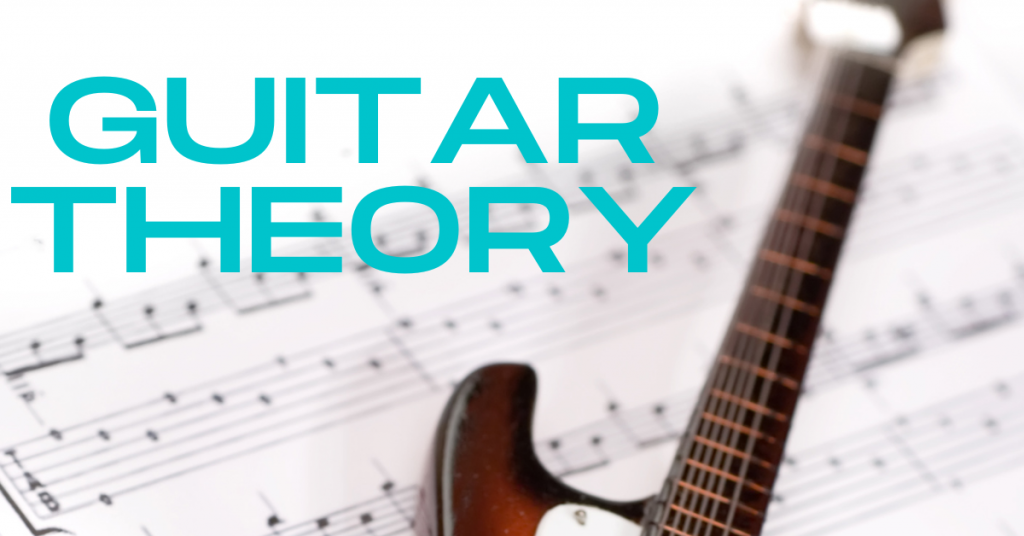Learn how to play the major pentatonic scale with our comprehensive major pentatonic scale charts. Perfect for beginners and experienced musicians alike, our article provides easy-to-follow fretboard diagrams and tips to help you navigate the major pentatonic scale effortlessly.
These are major pentatonic scale charts/ fretboard diagrams for all 12 notes of the chromatic scale.
This means you can pick a root note, plug the fretboard diagram into it, and play that particular major pentatonic scale.
Using the scale charts will make it easy to improvise over major scale backing tracks in the same key (which means “using the same root note”). Quist makes some of the best backing tracks for guitar, so make sure you check them out!
How to use these charts
The numbers represent intervals, and the intervals that define the sound of the major pentatonic scale are the 3rd and 6th.
And as you can see from each major pentatonic scale shape, the major pentatonic scale formula is:
1-2-3-5-6
The easiest way to get started with these is by looking at each degree of the pentatonic scale on the low E string.
From there, play 2-notes-per-string starting from the chosen degree.
A Major Pentatonic Scale
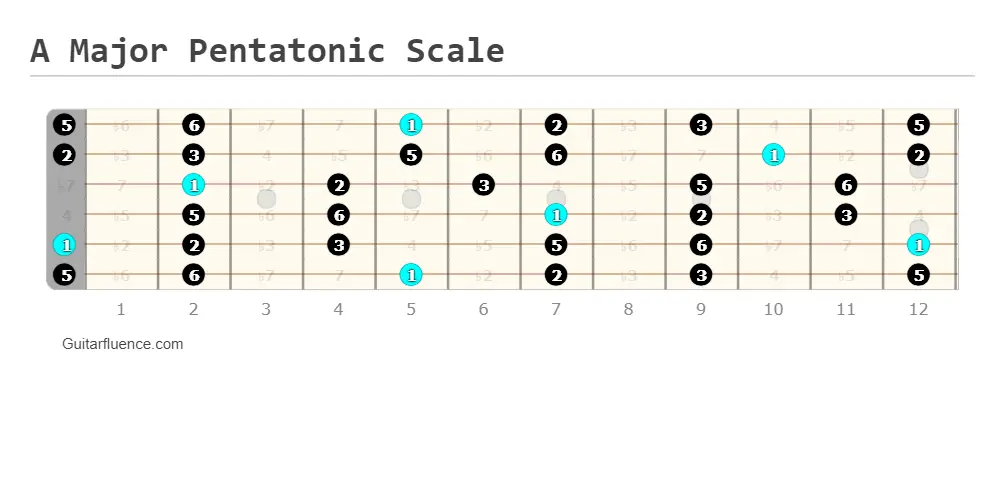
Bb Major Pentatonic Scale
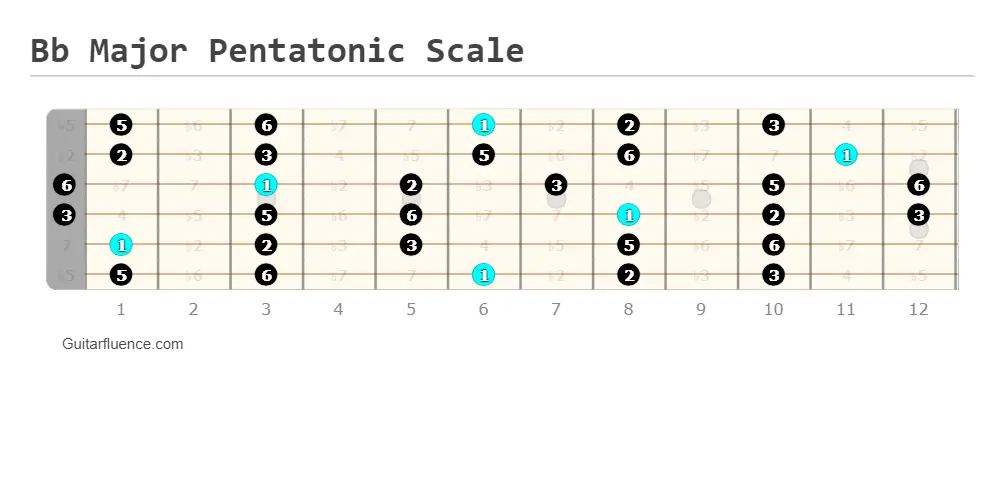
B Major Pentatonic Scale
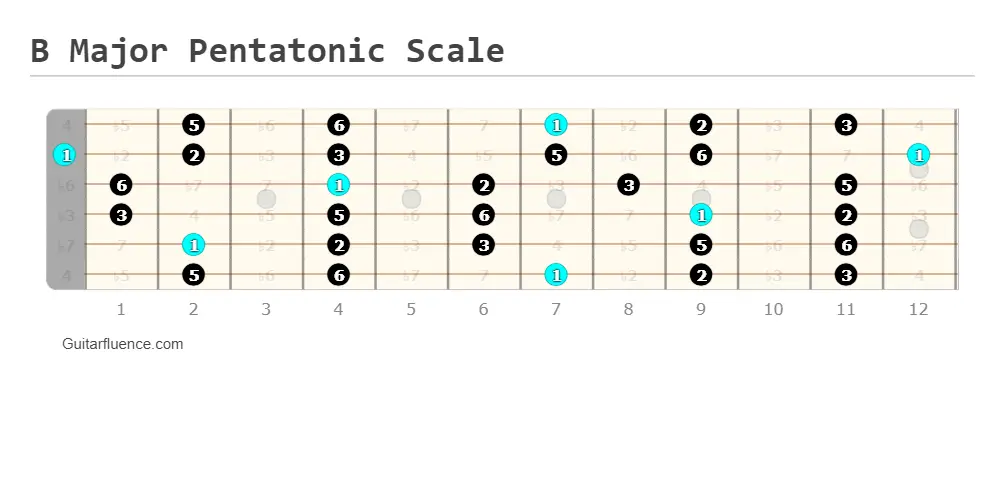
C Major Pentatonic Scale

C# Major Pentatonic Scale

D Major Pentatonic Scale
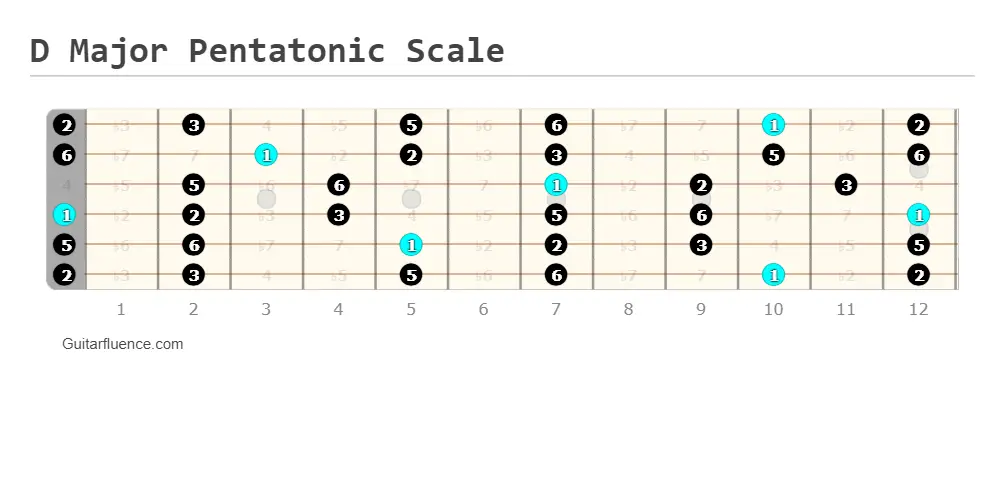
Eb Major Pentatonic Scale

E Major Pentatonic Scale
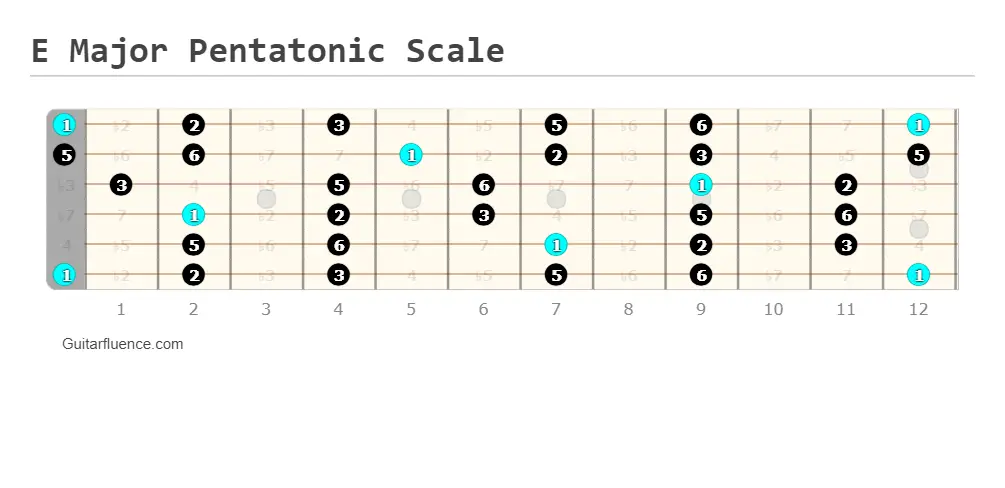
F Major Pentatonic Scale

F# Major Pentatonic Scale
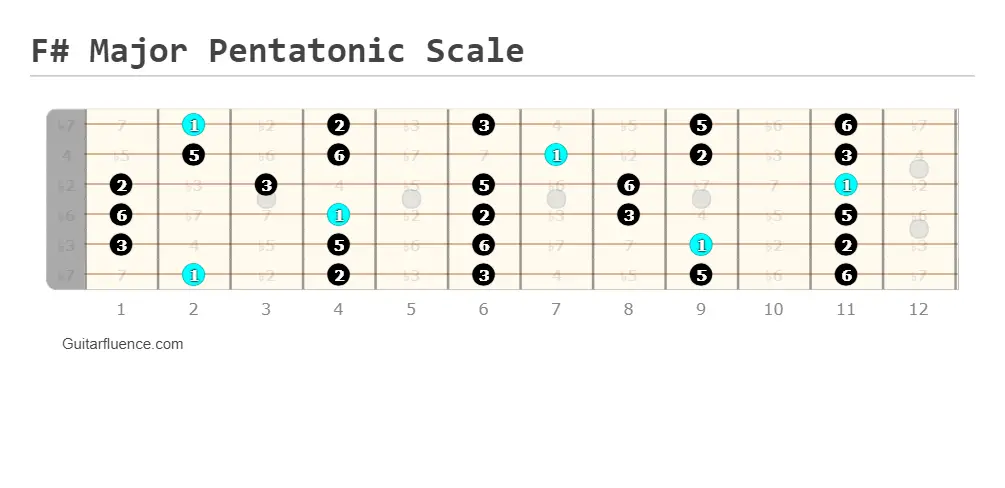
G Major Pentatonic Scale
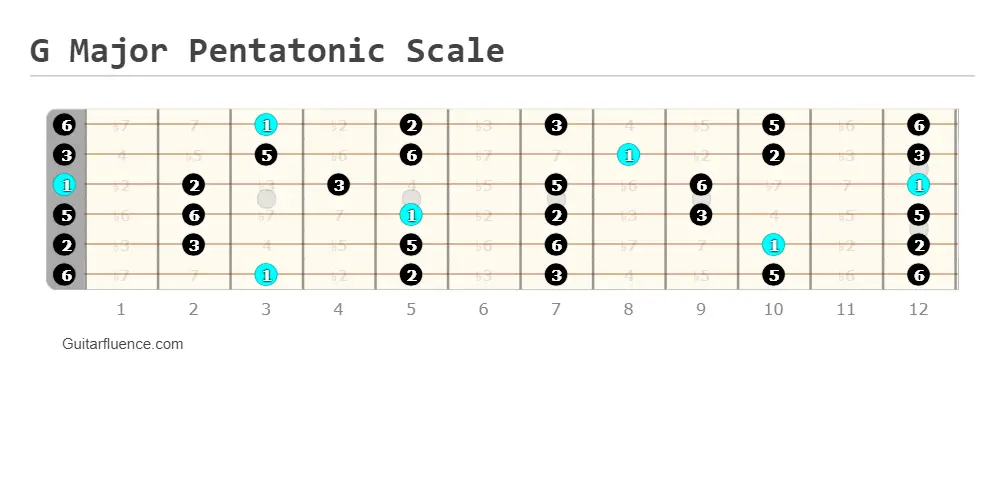
G# Major Pentatonic Scale
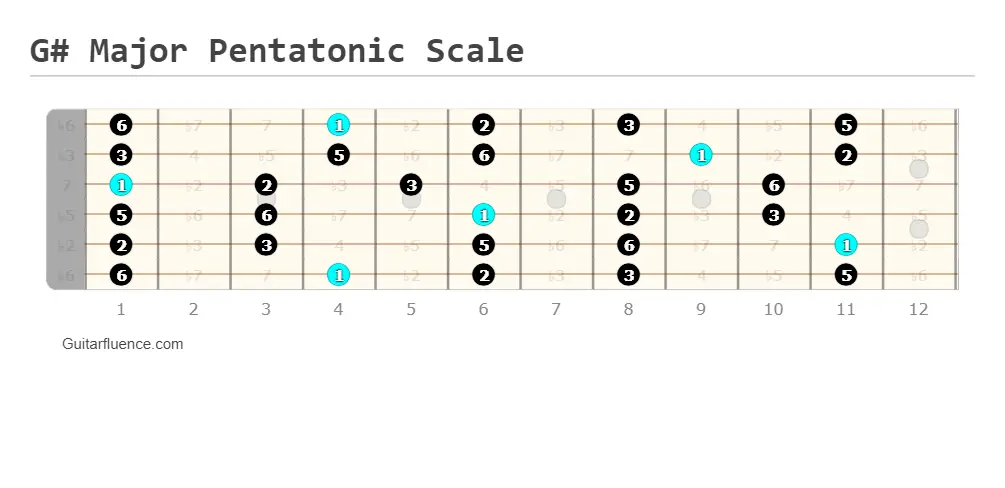
Using Major Pentatonic Scale Charts to Improve Your Guitar Playing
There are so many ways that you can use these major pentatonic scale charts.
Soloing and improvisation
For starters, your soling skills will skyrocket! You’ll master transposition, and learn to effortlessly navigate the fretboard.
From there, improvisation will become second nature. You’ll be able to improvise confidently during jam sessions, live gigs, or anywhere else you may need to improvise.
Also, mastering all pentatonic positions shown in the charts will allow you to diversify your phrasing, and play the scales across the fretboard on any string.
Ear training
Practicing the major pentatonic scale in multiple positions will shape your ear, and allow you to recognize certain root notes, and develop a stronger relative pitch.
On top of this, regular use of the scales will improve your fret-hand’s muscle memory, making these shapes a breeze to play.
What’s next?
Start jamming! Put these major pentatonic scale charts to good use.
If you’re ready to take the next step in your playing, then learn these extended pentatonic scale shapes.
Until next time, keep shredding!


